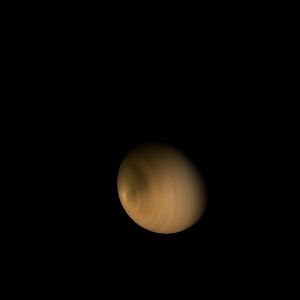|
|
Space Astro
|
Info for exoplanet "Berto Best"
| Scientific (actual) data |
|---|
| Name | LP 704-48 Bb |
| Planet status | Confirmed |
| Planet mass | 56 |
| Orbital period | 147.6 |
| Semi major axis | 0.286 |
| Orbit eccentricity | 0.1 |
| Inclination | 61 |
| Discovered | 2012 |
| Updated | 2024-07-02 |
| Omega | -0.3 |
| K | 8200 |
| Publication | Published in a refereed paper |
| Detection type | Radial Velocity |
| Star name | LP 704-48 B |
| Right ascension | 1.7° |
| Declination | -8.88° |
| Mag j | 14.14 |
| Mag h | 13.55 |
| Mag k | 13.13 |
| Star distance | 30 |
| Star mass | 0.083 |
| Star radius | 0.1 |
| Star sp type | M8.5V |
| Star age | 3.7 |
| Star temperature | 2400 |
| Star alternate names | SDSS J000649.16-085246.3 |
| Wikipedia article | LP 704-48 Bb |
Back
| |
| Fictional info (?) |
|---|
| Suggested name | Berto Best |
| Planet type | Huge cold gas giant |
| The planet telescopically displays the complete range of phases, similar to Venus and the Moon, as it moves in its inner orbit relative to LP 704-48 B, which reoccurs over the so-called synodic period approximately every 162 days.
The two polar ice caps appear to be made largely of ice. |
| Atmosphere | Formaldehyde | 99% |
| Atmospheric pressure | 1.8 bar |
 |
| No known satellites |
| Google search for Berto best |
|
Website by Joachim Michaelis
|
|
|
|